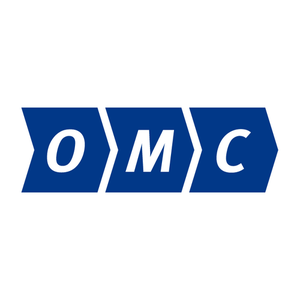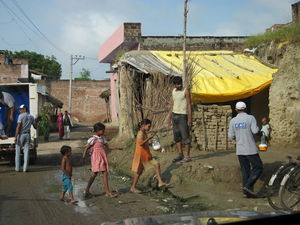

OMC Power builds small-scale power plants which utilise renewable energy sources. They sell power to rural off grid communities, as well as telecoms companies. Currently operating 11 Micropower Plants, the company is looking to scale to 100 plants by the end of 2013. Telecom customers pay a fixed price per kWh, while community customers pay 5 INR for home-delivery of a lantern per day, and 20 INR for a PowerBox per day. This approach to Micropower helps reduce CO2 emissions and contributes to socioeconomic development in India’s off-grid areas, providing electricity to India’s rural communities.
Year Launched : 2011
Business Model : Consumer/ Business
Targeted Device : Basic/Feature phone
Primary Delivery Technology : SMS/ USSD
Products & Services : Payments
Markets Deployed In : India
Estimated Number of Users : 150,000
BACKGROUND AND OPPORTUNITY:
What opportunity existed and how was it filled by the organisation?
Worldwide, 1.4 billion people still have no access to power; 400 million of them live in India, and 150,000 of India’s telecom towers lack reliable power access. While this sets the wider background and opportunity for Micropower, OMC Power also outlines the opportunity from the end user’s point of view. “Everyone wants power, and the alternatives – kerosene and diesel – are getting more expensive by the day”. OMC aims to tackle this issue by selling power to both domestic and industrial users. They do this by building small scale Micropower Plants that extract clean energy from sun, wind and biogas. The Micropower Plants also have battery banks and diesel generators for backup. Around 40% of the Operational Expenditure (OPEX) of Mobile networks can be spent on power and fuel alone in emerging markets. The common power source for base stations in these networks is diesel, which is expensive and environmentally unfriendly. Telecoms customers who would otherwise spend significant amounts on diesel can now buy power from OMC’s Micropower Plants on a kWh basis. These plants are situated near base stations, where a power cable is run between the two sites. On the community customer side, power is sold on demand through networks of local agents which rent out lanterns, PowerBoxes (which power a variety of household devices such as lights, fans and TVs) and other power utility products. “Lanterns are affordable for all income classes, and PowerBoxes for roughly the top 50%. The largest threshold as with any new product or service is affordability, and we have found the pricing model to match.” At present the service is entirely pre-paid, but OMC is trialling a mobile money system that could integrate with their energy products. While this functionality isn’t yet live, the PowerBox unit features a mobile charging socket, making the service very useful for customers using mobile in rural communities. “What we’re starting to see is that people are using their mobile phones more, as they’re always on.”
PROGRESS SINCE LAUNCH:
How have things gone so far?
Interestingly, OMC initially thought telecom power would be their main revenue source. “We now see, about one year after launching our first Micropower Plant, that telecom power will only account for around 50% of our revenue”. The surprise was how rapidly the residential customer base was secured upon launching the operation. “Our initial ambition was to build a customer base of 30% in the rural communities that we served over a period of 2 years. We achieved this target in 45 days.” At present OMC have 11 plants up and running, delivering power and serving both communities and telecom. “By the end of this year we’ll have around 100”. This rapid expansion would aim to reach around 10 million end users by 2015. “We currently reach about 150,000 people, out of which we serve a couple of thousand every day.” OMC have already seen success stories in local markets, which arise from the benefits of access to affordable power. This allows children to study any time of day, shops to open after dark, and enables work that can be carried out at night. Perhaps the biggest success to date, however, has been the rapid and unexpected rate at which the community power business has grown.
SCALABILITY:
How is the service being scaled to reach a larger audience?
In many ways OMC has reached a scale within Northern India in a shorter time than anticipated. However, the rapidly increasing targets for scaling are clear, and while OMC were building one Micropower Plant per week midway through 2012, they are increasing this pace to one plant per day during 2013. To support this kind of rapid scaling, the organisation has had to think carefully about the operational side of its business. “A key issue for scale, as with any infrastructure business, will be to ensure timely funding to ramp up the operations, and to ensure the right people – to build the plants, to run the plants, and to manage operations.” The next critical factor for scaling – on the rural communities side – is raising customer awareness. “One of the big jobs for scaling has been to establish customer relationships – offering something that people want, and want to pay for, in combination with getting the word out there.” Here OMC have marketed their services through a range of channels, e.g., billboard displays, direct sales, road shows, and word of mouth. On the industry side, the company has created stable relationships with telecoms customers to build confidence, ensuring that these customers get exactly what they want, and see OMC as having the ability to scale. Here it has been critical to offer high quality service, and the company offers a strict service level agreement to Telecoms customers. Despite achieving rapid scale in roll out of Micropower Plants, OMC recognise that reaching the kind of scale that would make a significant impact on low electrification levels in India single-handed is a herculean task. “India needs many companies like OMC to substantially increase the levels of rural electrification across the whole country.”
USER CENTRIC ATTITUDES:
How does the organisation build itself around the end user?
The basic need for electricity is clearly present within the rural communities. In the area in which OMC operates the average spend per household on kerosene is around 180 INR per month. With OMC’s basic lantern service, these customers spend about 100 INR per month. “The value proposition to the household is clear – you reduce spend, reduce noxious fumes, and you get a much better service. One of the most important things is also going out there, demoing the equipment, and earning trust by being an active community member.” OMC stress that, as an organisation, they are entirely designed and focused around their rural customers. “One of the big things that has really helped build the brand’s credibility is that we do home deliveries and pickups. This means that every day we have two connection points with our customers, and we’ve been extremely quick to respond to customer feedback coming in.” OMC appreciate the differences between communities in different localities, and therefore employ sales agents and delivery staff from the locality of each plant. They are also working with surveys to get more systematic feedback. The organisation targets two basic and broad customer segments in these communities. The first is a general residential customer who has a basic need for one or two lanterns; this falls within the economic means of most users. The other target segment is small business owners. These might be people running a small shop, to those running stalls in a village market, or even the small local hotels. These are the primary customers for the PowerBox, though many households will mature into using this more advanced service as demand grows. The principle by which OMC lead their user centric design seems to be a commitment to spending time on the ground within the communities they serve. “More than anything else it’s been our relentless quest to offer a really good service in these communities that has helped us – spending a lot of time with our customers, and really understanding what they want.” Interestingly, when asked to indicate the customer needs identified, the company list the following in approximate order of priority: mobile phone charging, lighting, cooling, heating, cooking, entertainment, transportation, and irrigation.
CHALLENGES:
What are the internal and external challenges currently faced?
One of the largest barriers OMC face is that Micropower is an entirely new market segment. This means that, externally speaking, the company has to tackle the perception that rural electrification is a risky investment proposition. “Unless you have visited one of our Micropower plants and seen the day-to-day business you will not fully believe it.” At the same time, this challenge can present an opportunity, as the regulatory framework is supportive of rural electrification, and it is a business with large growth potential when executed correctly. Having said this, it still takes focused planning to ensure proper permits and assistance is provided to OMC as an independent energy producer. The company also points out that many investments and subsidies aimed to address India’s growing power deficit are concentrated in the Gigawatt space, as opposed to the Kilowatt space where OMC is active. The company has also been committed from the outset on the commercial success of the operation. “Our belief from the start was that we need to build the business entirely independently of any grants or subsidies. It has to stand on its own legs, and that forces restrictions on what you can or cannot do; for example, on the size of an initial deployment.” From the user’s perspective, the adoption challenge is affordability. As household budgets are so small, it is near impossible for rural users to own products such as solar panels, batteries or lanterns. This is why a subsidy model is integral to the business case for those kinds of initiatives. On another front, although OMC know they concretely generate jobs at the plants, as well as deliver power in the short term, they are interested in the mid- to long-term impact of their work. “We’re going to start doing some more structured work during this year on the socio-economic impact questions, but we haven’t done any focused work there yet. That’s one of the things we are looking closer at together with the GSMA as well as with NGO partners. However, as of today, we have more questions than answers.”
PARTNERSHIPS:
What is the value of partnerships, particularly with MNOs?
Besides working with Mobile Network Operators and Telecom Tower Companies, OMC have very deep partnerships with their technology suppliers. These are based upon relationships that some members of the OMC team have forged in previous roles. Aside from this, OMC is looking at new technologies and utilities that might be suitable for their customers. While they have no interest in being a technology company, they are interested in being a funnel, both in terms of sales and marketing, of such products. “For example, as soon as biomass is more mature, and commercialized in a rural setting, then we will be looking for partnerships with renewable technology companies here.” The key value of partnerships with Telecoms companies is simple, in that OMC understands their power requirements and serves them in the best possible way. With the NGOs, the value comes in leveraging OMC’s work in rural communities to best contribute to socio-economic development. When it comes to renewable technology companies, then the value comes from suitable suppliers who can provide products that fit into OMC’s slim power budget, and enhance the lives of its customers.
LOOKING BACK, LOOKING FORWARD:
What key lessons have been learnt, and what are the organisation’s future objectives?
OMC grew the community power business more quickly than expected, and this taught them their biggest lesson. “If you find the right offer with the right price point, then the need for electricity is so strong that it will take off like wildfire.” Here the right price entry point is very low, around a hundred Rupees a month, and OMC stress the need to look at very low pricing to start offering any service. “If you succeed to do that then the demand is enormous.” Another key lesson is ensuring good communication with their customer base, which is extremely diversified. In terms of future objectives, OMC are aiming at getting 100 plants operational by the end of the 2013, and to continue scaling these efforts. “By 2015 we’re aiming to have over 1,500 plants, reaching 10 million people, focusing mainly in Northern India.” The company has already been approached by many other regions in India, but is happy to grow organically. “You have to be careful not to spread thin, but to really focus your operations where you’re present.” Having said this, OMC is looking at other markets where they can deliver Micropower through channel partners. Here the company will provide the know-how and the processes, while the partners will provide the understanding of rural local conditions in new markets. “You have to design everything you do around your customers, and if you look at the market conditions of a rural community member in for example East Africa, and a telecom operator in that region, then it’s quite a bit different from India – you really have to know the local conditions. If you’re going to grow beyond your initial core market you have to work with local partners.”
This document was originally produced as part of the former Mobile for Development Impact programme.


